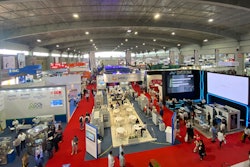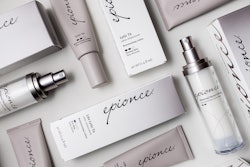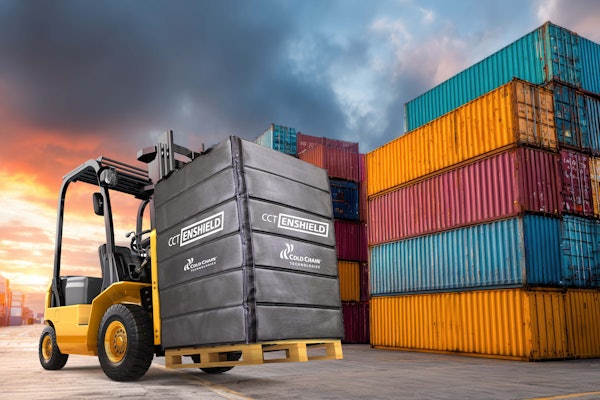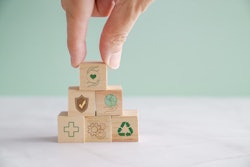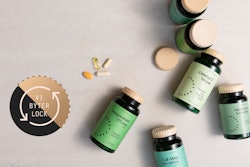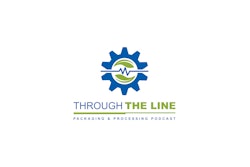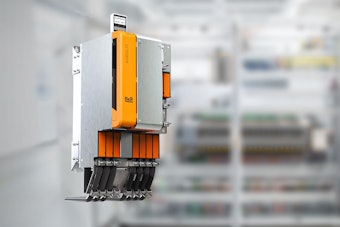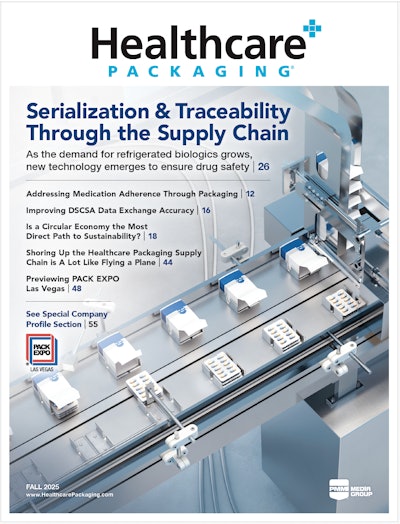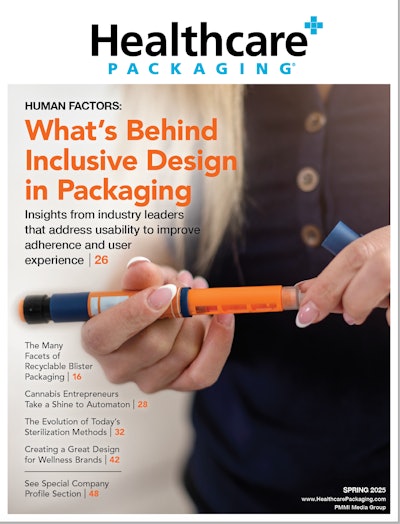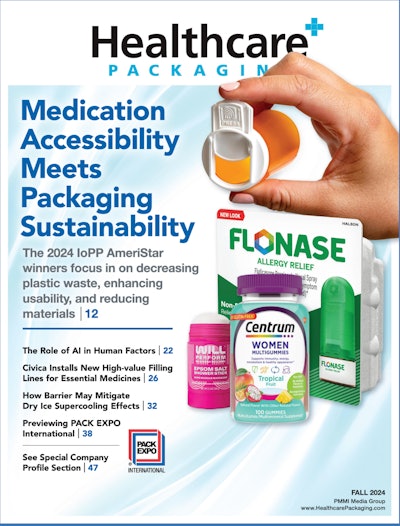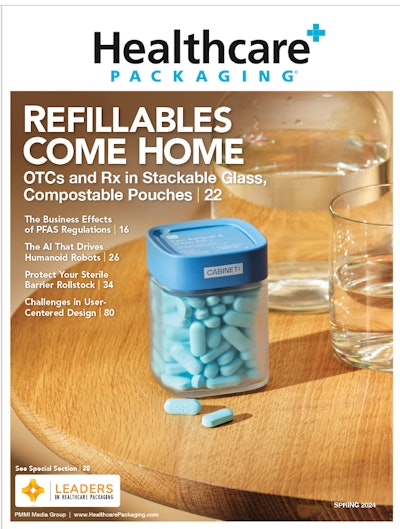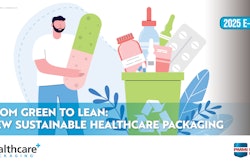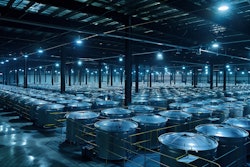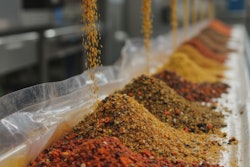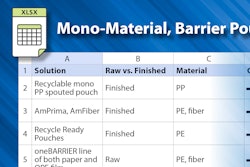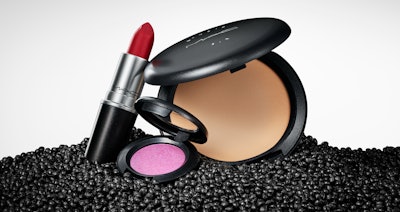
A mainstay of the beauty industry since 1946, The Estée Lauder Companies has gained a worldwide reputation for elegance, luxury, and superior quality in the four major product categories of fragrance, hair care, skin care, and makeup in which it operates. With a portfolio of more than 20 brands and a presence in over 150 countries and territories, ELC is well positioned to drive global impact around sustainability. It’s a responsibility the company has embraced throughout its organization, and its commitments around more sustainable packaging play an integral part.
In 2020, ELC articulated its goals around sustainable packaging, stating that by 2025, 75% to 100% of its packaging by weight will meet at least one of what it calls the “5 Rs”: recyclable, refillable, reusable, recycled, or recoverable. In addition, it has committed to increasing its use of PCR to 25% or more by 2025 and reducing the amount of virgin plastic in its packaging to 50% or less by 2030.
While ELC’s goals are like those of many of its CPG peers, being in the luxury business carries with it unique challenges. Nevertheless, through its use of robust, SKU-level data and innovative, emerging technologies and strategies, the company is just a few percentage points shy of its 2025 goal.
Balancing luxury, functionality, and sustainability
ELC’s brands encompass an extensive range of beauty options, among them refined luxury fragrances from Aerin, dermatologist-guided skincare and makeup solutions from Clinique, plant-based and better-for-you hair and skin care products from Aveda and Origins, and vegan, cruelty-free makeup from Smashbox—among 18 others. But with great luxury comes great expectations, particularly from consumers who want equally premium packaging.
“Our business is in the prestige and luxury beauty space, and in those markets, packaging is a very, very important part of the consumer proposition. It’s one of the first things the consumer is attracted to when she sees it in the store or online,” says Robert Peterson, senior vice president, Global Packaging & Engineering, for The Estée Lauder Companies. “It has very high functional value, especially when you’re dealing with things that are applying makeup or applying product to the face. And it has a very high luxury-badge value to the consumer. Oftentimes the consumer cherishes the product; for example, she takes it out of her purse and puts it on in the restaurant. She wants people to see it.”
 The Estée Lauder Companies’ fragrance, hair care, skin care, and makeup portfolio comprises 23 brands. Image courtesy of The Estée Lauder Companies
The Estée Lauder Companies’ fragrance, hair care, skin care, and makeup portfolio comprises 23 brands. Image courtesy of The Estée Lauder Companies
In this space, maintaining functionality and aesthetics while delivering a more sustainable package can be challenging. Premium beauty packaging often includes special printing processes like embossing and foils that render it non-recyclable, multiple materials and components, as in the case of mascara and lipstick packaging, and small-format sizes that can’t be recycled through conventional material recovery facilities (MRFs). The use of PCR in luxury packaging can also be difficult. As a result of the mechanical recycling process, PCR may not have the same mechanical or aesthetic properties as virgin plastic, or even material compatibility with the products being packaged.
Despite these challenges, the company says that incorporating sustainability into its packaging designs is a strategic imperative. “That’s why we created our 5 Rs,” says Peterson. “We wanted to give our brands options to look at different ways of driving our sustainable packaging.”
Important to note, he adds, when ELC developed its sustainable packaging goals in 2020, they were not driven by corporate pie-in-the sky aspirations. Rather, they were created in partnership and based on existing SKU-level analysis.
“We used the data to do a top-down analysis to say, ‘Okay, what are our current 5 Rs?' And it was around 50%. And then, to get to 75% using the data analytics, we asked ourselves, ‘How much packaging can go to glass? How much can go to refill? What percentage from available PCR streams can we incorporate?’ We did a top-down analysis to say that we believe this is achievable with these interventions.”
Custom tools and training guide sustainable design
As of 2023, 71% of ELC’s packaging meets the 5 Rs. Much of this progress can be attributed to New Product Launches (NPLs) that have been designed with the 5 Rs in mind. According to Peterson, 25% to 30% of ELC’s sales come from NPLs launched within 12 months. “As we’re developing new products and new packaging, we’re taking the opportunity to incorporate one of the 5 Rs, versus having to go back and design all our packages from scratch,” he explains.
To assist its packaging developers, marketers, and procurement teams in creating packaging that aligns with the 5 Rs, ELC developed its Packaging Sustainability Guidelines, which contain an overview of ELC’s definitions, material selection guides, and FAQs. They also provide direction for design that enhances packaging sustainability.
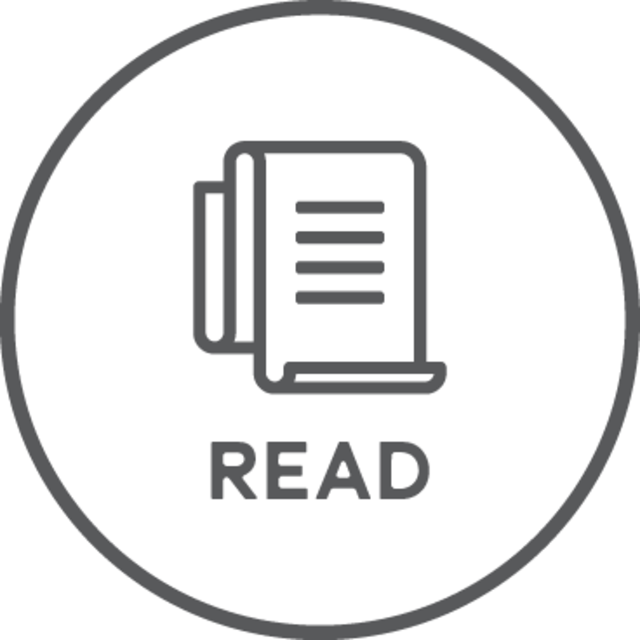 | Learn how global wine and spirits brand Pernod Ricard is employing packaging innovation to reach its sustainability goals in this article, “Pernod Ricard Commits to ‘Circular Making’” |
The priorities listed in the guidelines include reducing and removing packaging where possible, designing packaging that is reusable and refillable, building designed-in recyclability, increasing amounts of PCR material in packaging, and replacing petroleum-based plastics with bioplastics, if the bioplastic can be recycled and does not contaminate traditional recycling systems.
ELC also provides regular training sessions, both formal and informal, for the packaging development team. In addition, in 2022, it introduced custom-developed tools to calculate the sustainability profiles of different packaging. In 2023, the calculator was enhanced to include potential GHG emissions associated with packaging designs.
“The calculator is very important, because we need to synchronize our new product package development work with our sustainability initiatives,” says Peterson. “Getting those developers and designers and engineers trained on using the tools is super important.”
ELC takes several routes to recyclability
As Peterson shares, getting from 50% to 71% recyclable, refillable, reusable, recycled, or recoverable packaging has involved “a lot of heavy lifting.” Given the expansive range of brands and packaging in ELC’s portfolio and their corresponding challenges, ELC’s packaging team has had to use out-of-the-box/bag/sachet/jar/bottle thinking. In the process, some of the packaging innovations ELC has introduced meet more than one of the 5 Rs. Likewise, for some of the 5 Rs, ELC has taken multiple routes to reach the same goal.
To address both recyclability as well as the need for more PCR in its packaging, in 2021, ELC transitioned from a plastic to a glass bottle for one of its biggest franchises, Estée Lauder Advanced Night Repair Serum. As Peterson explains, the existing bottle was made from a plastic that was not being captured in recycling streams. This meant that not only did the packaging not meet ELC’s recyclable standard, but because it was hard to recycle, ELC was also unable to incorporate PCR into new serum packaging.
 ELC switched the packaging for its Advanced Night Repair Serum from plastic to glass to allow the container to be recycled while enhancing its luxury appearance. Image courtesy of The Estée Lauder Companies
ELC switched the packaging for its Advanced Night Repair Serum from plastic to glass to allow the container to be recycled while enhancing its luxury appearance. Image courtesy of The Estée Lauder Companies
According to a 2021 Facebook post from the company, switching to recyclable glass bottles for the serum “saves millions of plastic bottles per year.” It added, “If we lined up those bottles end-to-end, they would stretch over 2,000 km/over 1,000 miles!”
Some skeptics may argue that moving from plastic to glass may be more about consumer perception than an actual reduction in greenhouse gas emissions (GHGs). To ensure that a move from one material to another is more than window dressing, ELC conducts a full Life-Cycle Analysis (LCA) when making a packaging change.
“When we went from plastic to glass for our Advanced Night Repair Serum, it was a big decision,” says Peterson. “We wanted to be sure that by making it more recyclable, we wouldn’t end up increasing the carbon footprint of the packaging. So, we did a very detailed LCA using an external party to validate that that wasn’t the case. Then we were able to move forward with the project and the decision to go that route.”
In addition, the move to glass enhanced the aesthetics of the package, making it even more luxurious, Peterson adds.
Another avenue ELC is pursuing around recyclability is the use of paper for items like single-use sachets and sample packs, which are traditionally made from a multi-laminate flexible film structure. “Because we offer prestige and beauty products, sampling is a very, very important part of our business model,” says Peterson. “The consumer must often first experience a product, then they fall in love with it and buy the full size. So, we want to be more sustainable with our single-use samples.”
In 2022, ELC hair-care brand Aveda, a pioneer in the sustainability space since its founding in 1978, unveiled a sample packet made from paper with an ethylene vinyl alcohol (EVOH) coating. The packet is certified as curbside-recyclable in Europe and the U.K.; Aveda is still working toward broad recyclability, including in the U.S. In addition to recyclability, the packet also offers other sustainability advantages. A peer-reviewed LCA shows that the paper package reduces water consumption by 36% to 68% and emissions [CO2 equivalent] by 37% to 64% when compared to the multilayer laminated structures commonly used in the industry.
 ELC brand Aveda created a paper packet for its single-use sample packs that can be recycled in Europe and the U.K. Image courtesy of The Estée Lauder Companies
ELC brand Aveda created a paper packet for its single-use sample packs that can be recycled in Europe and the U.K. Image courtesy of The Estée Lauder Companies
For beauty and personal care product brands though, ensuring that a package is recyclable is not always as “easy” as switching to a new material. If a package is too small, even if it’s made from a material that is widely recyclable, it won’t be captured at a MRF due to the limitations of current sorting technology. Beauty and personal care packaging also oftentimes comprises numerous components, made from different materials and of different sizes.
Recognizing these challenges, in 1990, ELC established the Back-to-MAC takeback program (see sidebar below) to help create a place for makeup packaging in the circular economy. Through the program, packaging is disassembled, and those materials that can be recycled are handled by companies specializing in hard-to-recycle items; the balance is used as waste-to-energy. Back-to-MAC, as well as other takeback programs from ELC brands Aveda, DECIEM, Bobbi Brown, and Clinique, check off several 5 R boxes: They are recyclable and recoverable, and become a source for recycled materials.
Advanced recycling joins mechanical as a source of PCR
Among ELC’s 5 Rs, one of the most important interventions is the use of recycled content. In this area, Aveda has been a leader. According to the company, 80% of Aveda high-density polyethylene bottles use a minimum of 80% PCR content, and more than 85% of its skincare and styling PET bottles and jars contain 100% PCR. In fiscal 2021, Aveda also launched a new 350-mL mono-material tube with 65% PCR polypropylene, which ELC says is the highest percentage it has developed to date in a mono-material tube.
Despite Aveda’s success with recycled materials, however, Peterson explains that it can be tricky to incorporate mechanically recycled PCR into beauty packaging. “With mechanical recycling, as you break down plastics and then grind them down, and then remelt them and use them again in molding processes, they don’t always have the same mechanical or aesthetic properties, or even material compatibility properties with the formulas we use,” he says. “We have to do a lot of testing and analysis on the materials to see how they’re going to perform in combination with our formulas.
“And sometimes, going back to our industry being perceived as luxury, the aesthetics are the big challenge. We may get the performance we need, but the aesthetics are not there. And then we have to go back to the brand and let them know there’s going to be a variation in the color of the package due to the PCR. Some brands are okay with that, because the story behind the brand is built around sustainability. Whereas other brands, while they want to be sustainable, they don’t want to sacrifice that luxury appearance.”
For the latter brands, ELC has found a way to incorporate PCR while still providing the same aesthetic properties and the same functionality as virgin materials. In 2021, ELC signed an agreement with chemical company Eastman to begin using its molecularly recycled Renew PET resins in its packaging (see sidebar below). Since then, ELC has also worked with SABIC to source certified-circular polyolefins for its tube packaging.
“The exciting thing about advanced-recycled resins is that they have the same properties, theoretically, as virgin plastic, so there is very little compromise on quality and performance,” says Peterson. “We haven’t seen anything like it before. The challenge is that some of the materials are still in the nascent stages; it’s not available for all resin types. It’s also more expensive.”
According to metrics provided in ELC’s 2023 Social Impact & Sustainability Report, since 2021, the company has increased the percentage of PCR used in its packaging from 15% to 19%. It also reports that in the same timeframe, it has increased the percentage of its packaging made from PCR and/or renewable materials from 38% to 40%. In regard to its use of virgin petroleum content in its packaging, ELC is currently at 83%.
The rise of refillable/reusable packaging
The final of the 5 Rs, refillable and reusable, make up the minority of ELC’s packaging, but that number may grow as engineers begin leveraging this option when developing NPLs. In February 2023, ELC fine fragrance brand Le Labo began offering online refills for its 50- and 100-mL eau de parfum bottles from its Classic Collection to U.S. and U.K. customers. It also allows consumers to bring their empty 50-, 100-, and 500-mL Classic Collection and City Exclusive Collection bottles back to a select number of its stores worldwide for refill, along with a discount.
Another ELC fragrance brand, Kilian Paris, also offers a refillable/reusable system. Says the brand, “Kilian Paris’ commitment to sustainability is native to its concept of luxury perfumery. A favorite perfume is bought only once and refilled for life. Hence, all our perfume bottles are infinitely refillable. Kilian refills allow you to refill your iconic 50-mL perfume sprays, 30-mL travel sets, or your carafes.”
 Fragrance brand Kilian Paris offers a refillable/reusable packaging system that includes a premium reusable bottle with refills in packaging that has been lightweighted to reduce waste. Image courtesy of The Estée Lauder Companies
Fragrance brand Kilian Paris offers a refillable/reusable packaging system that includes a premium reusable bottle with refills in packaging that has been lightweighted to reduce waste. Image courtesy of The Estée Lauder Companies
According to Kilian, the refill bottle is equipped with an anti-overflow mechanism, and its dispenser automatically stops the transfer of the perfume once the bottle is full. In addition, the new refill package has been lightweighted to minimize waste.
The most recent innovation from ELC in this space is a new refillable/reusable packaging system for Estée Lauder Revitalizing Supreme+ Moisturizer Youth Power Crème, a multicomponent package that uses a pod refill (see sidebar below).
Estée Lauder: A beacon of innovation
In an era where sustainability is becoming increasingly intertwined with consumer expectations and corporate responsibility, ELC stands out as a beacon of innovation and commitment to environmental stewardship. Through its strategic approach encapsulated by the 5 Rs—recyclable, refillable, reusable, recycled, or recoverable—ELC has not only set ambitious goals, but has also made tangible strides towards achieving them.
Navigating the complexities of the luxury beauty industry, where packaging plays a pivotal role in consumer perception, ELC has leveraged robust data analytics and cutting-edge technologies to drive sustainable packaging solutions. From transitioning iconic products like Esteé Lauder Advanced Night Repair Serum to recyclable glass bottles to pioneering paper-based alternatives for single-use sachets, the company has demonstrated a steadfast dedication to reducing its environmental footprint without compromising on product quality or aesthetics.
Crucially, ELC’s commitment extends beyond mere rhetoric; it is deeply ingrained in the fabric of its operations. By integrating sustainability into the very DNA of its packaging development processes, from comprehensive life-cycle analyses to innovative material sourcing partnerships, ELC is forging a path towards a more sustainable future for the beauty industry.
As the company continues to push boundaries and explore new avenues, such as the expansion of refillable and reusable packaging systems, it serves as a testament to the transformative power of data-driven innovation and strategic collaboration. Through its unwavering dedication to the 5 Rs and beyond, ELC is not only redefining luxury in beauty, but also setting a new standard for environmental responsibility in the global marketplace. PW
Back-to-MAC Makes Recovery Possible
Of The Estée Lauder Companies’ 5 Rs, “recoverable” may be one of the most challenging for a maker of luxury personal care and beauty products. To address the difficulty in processing and recycling the small-format and multi-component packaging traditionally used in these applications, in 1990, ELC brand MAC Cosmetics pioneered one of the first takeback programs with Back-to-MAC.
Back-to-MAC enables consumers to return their empty MAC Cosmetics packaging, including eyeshadow pots and lipstick packaging, to participating MAC stores and online. Not eligible for return are liquid lipsticks, glitters and pigments, makeup removers, fragrances, brush cleansers and face cleansers, mixing mediums, acrylic paints, nail lacquers, and airbrush makeup.
To address the variety of challenges related to this packaging, ELC’s program “takes into account operational concerns such as transportation, handling, and end-of-life processing, as well as customer experience, communication, and engagement,” says Robert Peterson, senior vice president, Global Packaging & Engineering, for The Estée Lauder Companies.
To help run its programs, ELC collaborates with suppliers around the world. In the EU, MAC works with MBA Polymers. In Australia, it has partnered with end-to-end solutions provider Close the Loop for over a decade. In March 2023, MAC announced it would also be partnering with Close the Loop in the U.S. and Canada.
 In North America, ELC has developed a closed-loop system to reincorporate some of MAC’s signature black plastic collected through the Back-to-Mac takeback program into new makeup packaging. Image courtesy of The Estée Lauder Companies
In North America, ELC has developed a closed-loop system to reincorporate some of MAC’s signature black plastic collected through the Back-to-Mac takeback program into new makeup packaging. Image courtesy of The Estée Lauder Companies
Says the provider, “Our global locations are uniquely positioned to handle recycled makeup packaging. While other facilities may require consumers to wash out bottles, containers, and tubes, we have the equipment to do it for them. Taking down the roadblock helps more consumers return their empties, giving them new life.”
After empties are returned to MAC, they are delivered to Close the Loop facilities, where they are then sorted and processed. If the plastic materials can be recycled, they are shredded, washed, and re-pelletized, after which they used to produce new materials. Meanwhile, metals are separated and sent to a metals recycling facility, and glass is crushed before becoming new glass. Materials that cannot be recycled are converted into energy via waste-to-energy technology, for a zero waste-to-landfill solution.
While the amount of material that comes directly back to MAC for its new packaging varies, depending on consumer engagement and the types of packaging that are being returned, in North America, ELC has developed a closed-loop system to reincorporate some of MAC’s signature black plastic into new MAC makeup compacts.
Says Peterson, “It’s an investment of time, people and expertise and is a program we’ve developed over many years in partnership with our suppliers.” In 2023, more than 340,000 lb of empty MAC containers—the equivalent of 9.3 million lipsticks—were processed in the U.S. PW
Molecular Recycling Contributes to PCR Goal
In 2021, The Esteé Lauder Companies and Eastman announced a global memorandum of understanding (MOU) whereby ELC and its portfolio of brands would begin incorporating recycled material from Eastman’s molecular recycling technologies into its packaging. (Molecular recycling is one of the technologies that falls under the umbrella of advanced recycling.)
Eastman’s molecular recycling technology enables hard-to-recycle polyester material to be broken down into its chemical building blocks for use in new PET products and packaging. Feedstock includes materials that would traditionally be sent to landfill or incineration, such as post-consumer recycled carpet fiber, green or mixed colored bottle bales, and thermoforms, among other waste polyester. In addition to unlocking a new source for rPET, Eastman says the technology also offers a lower GHG footprint when compared with virgin plastic production and results in a plastic that is indistinguishable from virgin materials.
 Eastman’s molecular recycling technology enables hard-to-recycle polyester material to be broken down into its chemical building blocks for use in new PET products and packaging.
Eastman’s molecular recycling technology enables hard-to-recycle polyester material to be broken down into its chemical building blocks for use in new PET products and packaging.
Eastman’s portfolio of molecularly recycled PET resins includes Cristal Renew and Tritan Renew, which Eastman says “demonstrate the same high-quality and processing ease of virgin polymers with the clarity, luster, color compatibility, and durability cosmetics packaging demands—while providing premium recycled content.”
Says Robert Peterson, senior vice president, Global Packaging & Engineering, The Estée Lauder Companies, “Our goal to reduce the amount of virgin petroleum content in our packaging as well as regulations around the world that target plastic reduction further encourage our exploration of advanced recycling as a complementary solution to mechanical recycling. We incorporate advanced recycled material from a variety of suppliers across our portfolio of 20 brands where relevant.”
 Packaging for Clinique’s Take the Day Off Cleansing Balm incorporates PCR from advanced recycling technologies. Image courtesy of The Estée Lauder Companies
Packaging for Clinique’s Take the Day Off Cleansing Balm incorporates PCR from advanced recycling technologies. Image courtesy of The Estée Lauder Companies
In the last several years, ELC has worked with Eastman and global chemical company SABIC to incorporate advanced-recycled PCR into its packaging. Examples include packaging for products such as Clinique’s Take the Day off Cleansing Balm and Bobbi Brown’s Extra Plump Lip Serum.
As Peterson explains, the decision to use mechanically or molecularly recycled material depends on whether a material might be available or compatible with a formula and its application, as well as the material’s compliance with ELC’s quality and certification standards. For those cosmetics that are regulated like over-the-counter drugs and require food-grade materials, advanced recycling offers virgin-quality materials that meet these regulations.
“Suppliers play a critical role in our packaging sustainability journey,” says Peterson. “Eastman’s recycling technologies and portfolio of Renew products are one example of supplier collaborations that help move forward our company’s packaging sustainability goals while maintaining the high-quality aesthetic, safety, and performance of our brands’ prestige products.” PW
Reusable Glass Jar, Refill Pod Reduce GHGs for Popular Moisturizer
In January 2022, The Estée Lauder Companies introduced an upgraded formula for its Revitalizing Supreme+ Moisturizer Youth Power Crème in packaging that meets two of the 5 Rs—refillable and reusable—while maintaining product integrity and the luxury experience ELC’s consumers expect.
“The product is one of the Esteé Lauder brand’s leading moisturizers, and the brand wanted to improve the sustainability profile of the packaging, taking into account the whole product lifecycle,” shares Allan Hafkin, senior vice president, Global Brand Package Development, The Estée Lauder Companies.
The goal of the project was to create a refillable and reusable system that would reduce packaging waste and improve the overall environmental impact of the product. The resulting packaging system involved a switch from a plastic jar to a reusable, recyclable glass jar with a multi-material cap and the development of a plastic refill pod that minimizes packaging weight by 90%.
 The refillable/reusable packaging for Esteé Lauder’s Revitalizing Supreme+ Moisturizer Youth Power Crème includes a reusable glass jar and a refill pod made from plastic. Image courtesy of The Estée Lauder Companies
The refillable/reusable packaging for Esteé Lauder’s Revitalizing Supreme+ Moisturizer Youth Power Crème includes a reusable glass jar and a refill pod made from plastic. Image courtesy of The Estée Lauder Companies
The path to realizing this packaging system presented several hurdles, however. According to Hafkin, one of the primary issues was ensuring that the refillable pods were as robust as the original packaging. The design had to allow consumers to easily replace the pods while maintaining the luxurious feel of the product. This required meticulous attention to the size, fit, and technical controls around the neck of the jar to ensure functionality and robustness in commercial execution. The teams also needed to guarantee that the jar and refillable pod would work seamlessly together across all tolerance ranges.
Another challenge was related to the specific nature of the product—a cream. “For any product across ELC’s brand portfolio, our high standards for safety, quality, and performance must be met,” says Hafkin. “In systems involving refillable packaging, we needed to ensure the product in the package would be protected when consumers replaced the pods, especially from a safety perspective.”
The implementation of the refillable/reusable system has led to significant environmental benefits. A Lifecycle Assessment (LCA) revealed that the new packaging approach has reduced thousands of pounds of plastic and has resulted in a reduction of at least 40% in associated emissions and energy consumption. PW



